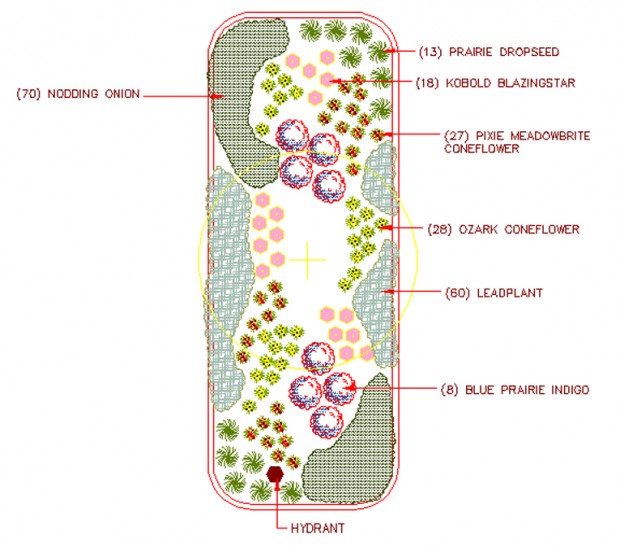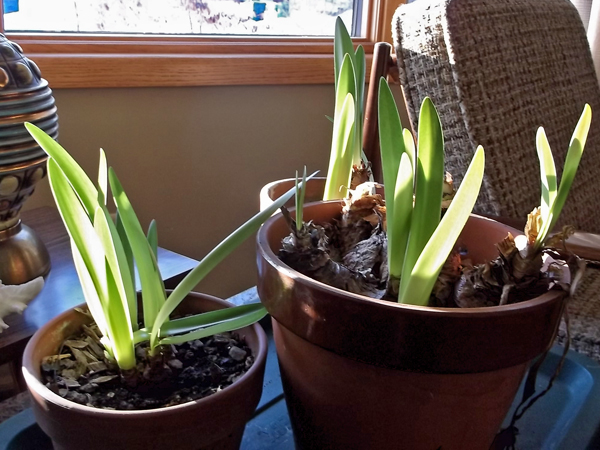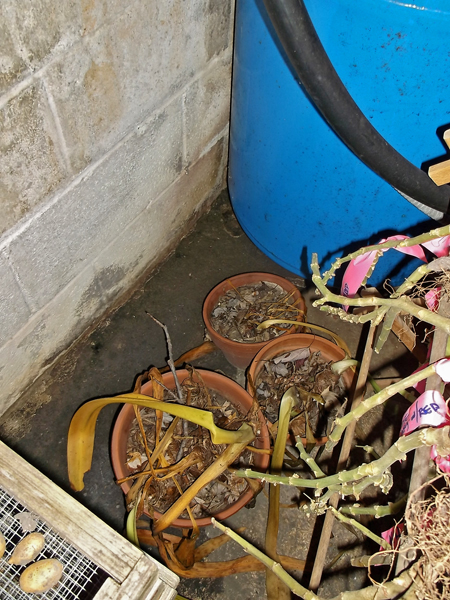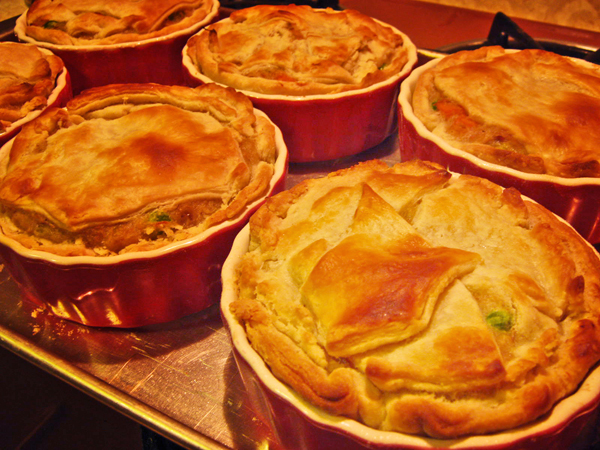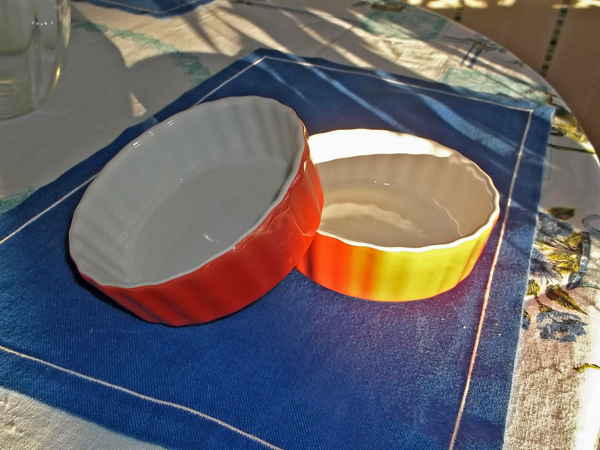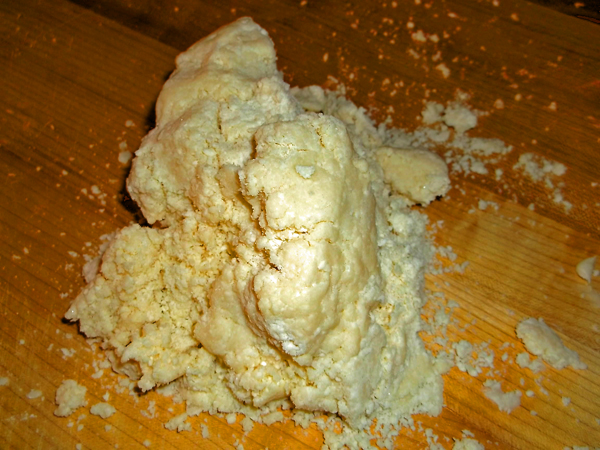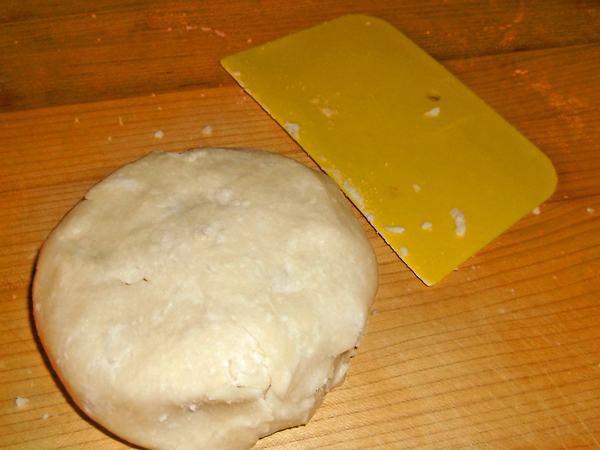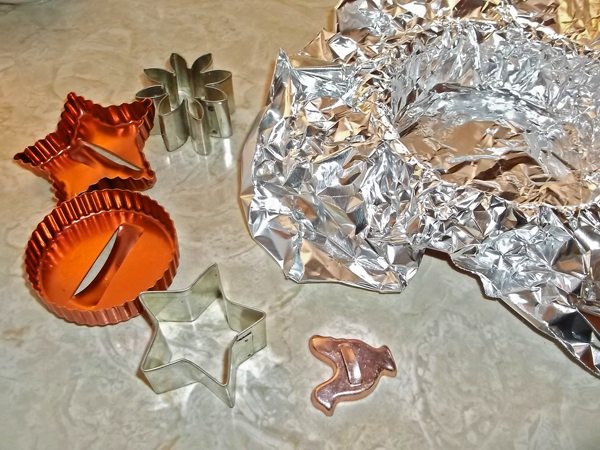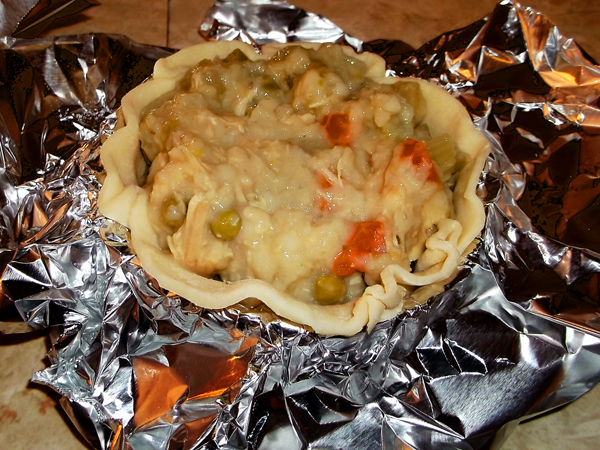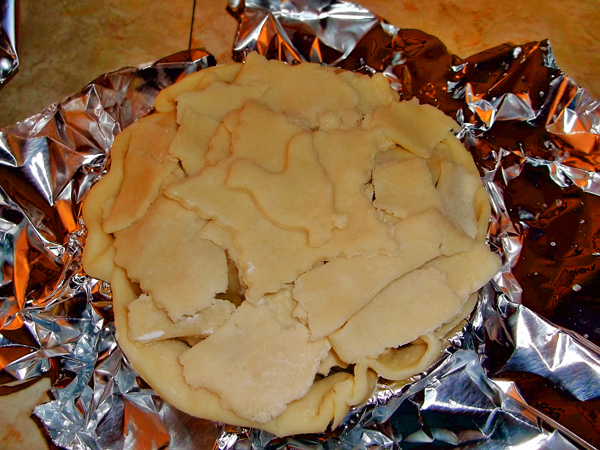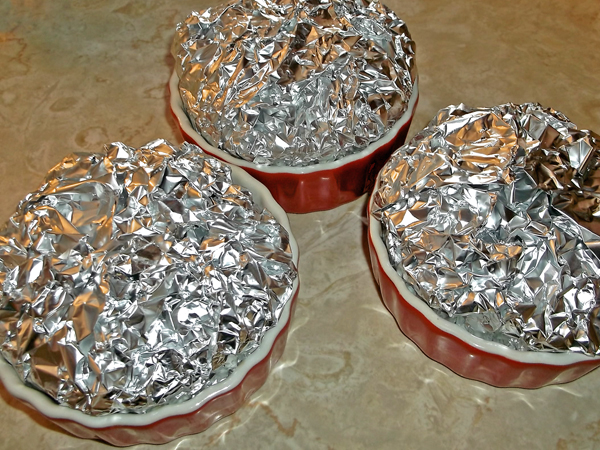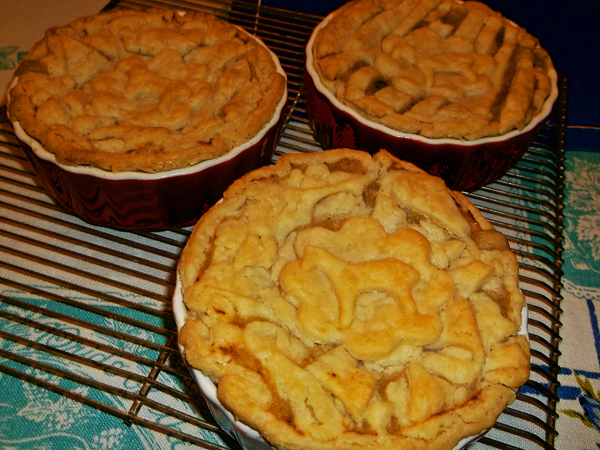
‘Pixie Meadowbrite’ Purple Coneflower complements the purple blooms of Leadplant in front, with yellow Paradox Coneflower to the rear of the photo.
Often (always), when I’m in my car, I check out the landscapes surrounding homes, carwashes, hospitals, banks, etc. – mostly it is the standard hedges of Japanese Yew, with some daylillies, a crabapple or two, Pfitzer and Hetz Junipers growing out of their planetary and spiral sheared shapes, even an occasional Yucca to remind us of their tenacity, since no one has used them in a planting design since the 1970’s. Oh, and big useless swathes of lawn – lots of lawn. Americans love their lawns. These plantings mostly reflect our post-war (World War II, that is) fascination with the formal gardens of Europe – of course, we called them “modern landscapes,” rather than European inspired landscapes, because, heck, we’re Americans, and we don’t copy, we lead.
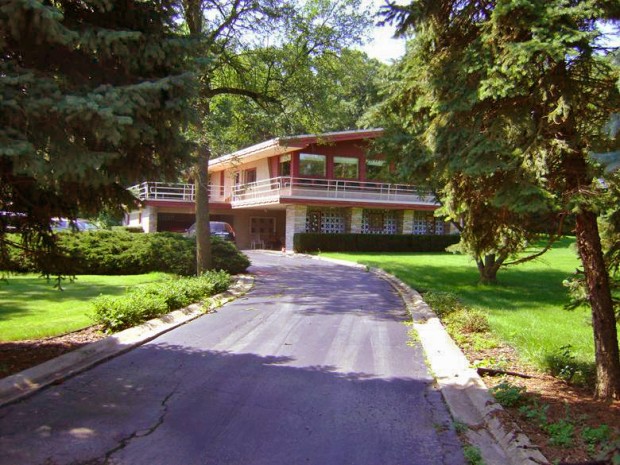
This Mid-Century house has it all, large lawn, evergreen trees, sheared foundation yews, Pfitzer Junipers, even a row of hosta along the driveway. This was the standard landscape installation for too long.
In 1956, Garrett Eckbo, a landscape architect, and World War II veteran, wrote in his book The Art of Home Landscaping:
“In the Southwest, where native vegetation tends towards dull grays and browns, the strong dark or clear greens of plants from more humid areas (grown with irrigation) are a welcome relief and contrast, and definitely render the climate more livable. In grasslands and prairies we plant trees; in forests we clear open spaces and plant grass; in the desert we introduce both trees and grass. All of these changes have the function of equalizing, improving, and humanizing these landscapes, making them better places for us to live.”
In another part of the book Eckbo does encourage lawn only where it is necessary, and to choose trees and shrubs that will not outgrow their location so that their need for pruning is minimized. If only that happened in the real world. In the real world, we have three story tall Norway Spruce trees terrorizing all other plant life and blocking the winter sun, lawns in arid Las Vegas, escaped English Ivy taking over our East Coast forests, and Limestone rip-rap surrounding our ponds and walls of metal pilings around our lakes – all in the name of making our surroundings better – more “humanized”. Great.
Fortunately, I have noticed changes in the last few years in just how “improving our landscapes” is defined. In 2000, while working at OWP&P Architects in Chicago, I found myself designing a planting bed for the Skokie, Illinois Public Library, wanting to include the low prairie shrub New Jersey Tea, Ceanothus americana, I called a large wholesale grower, Midwest Groundcovers, to ask if they had it available; they weren’t familiar with the shrub. Fast forward, 10 or 12 years, and they not only carry New Jersey Tea, they have an entire section of their catalog dedicated to ornamental Midwestern natives and actively promote their use. Great!
In 2011, I was asked to redesign the front landscape of a senior living facility in Des Plains, Illinois. The client wanted something that looked good the year around, and specifically requested that Midwestern native plants be included in the planting scheme. All of the new plants, with the exception of Virginia Sweetspire, are Midwestern natives, some, such as the ‘Pixie Meadowbrite’ Purple Coneflower and ‘Autumn Blaze’ Maple are hydrids of native crosses.
Upon arriving at the site, the first thing I noticed was the overgrown spruce trees planted near the foundation of the building. All of the shrubs were pruned into submission, rather, I should say sheared into shapes that defied description.
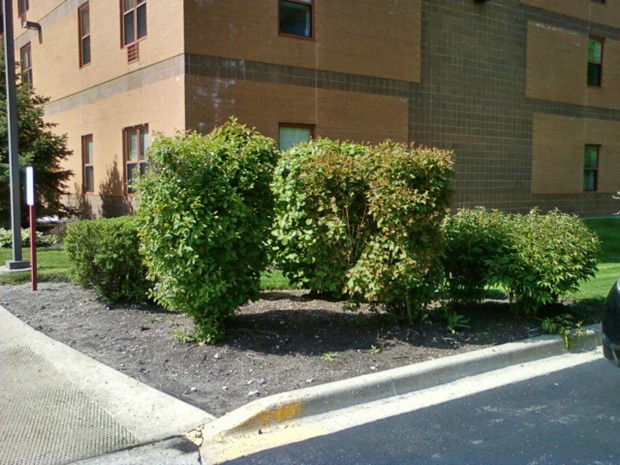
Their will to live is mightier than the power-shear – but just barely.
There was no hope for moving the overgrown spruce trees, they had to be removed.
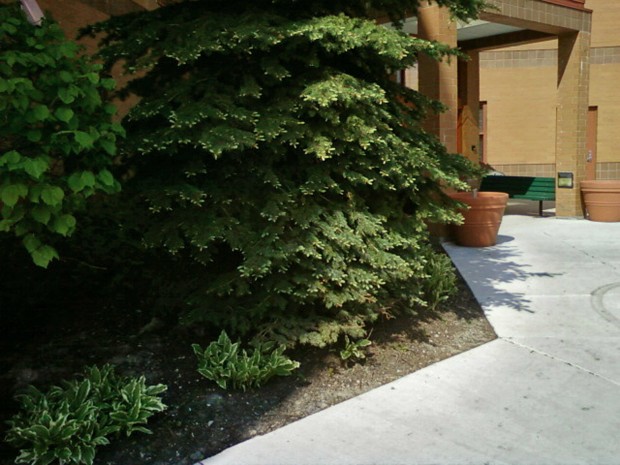
This spruce tree is trying to grow between a rock and a hard place – “Time to limb it up,” is the typical response to this misplaced planting.
Here, on the north facing wall, the spruce was replaced with a Red Maple hybrid, underplanted with Virginia Sweetspire, Itea virginica, Turtlehead, Chelone glabra, and evergreen Christmas Fern, Polystichum acrostichoides. The white flowered ‘Annabelle’ Hydrangea behind, and the Hazelnut shrub, to the left, were retained. The pictures that follow where taken in July of 2013, one year after planting.
 On the east facing wall, native Serviceberry, Amelanchier sp., and Black Chokeberry, Aronia melanocarpa, (both have great fall color, and white flowers in the spring) as well as many Midwestern prairie plants replaced the spruce. See the planting plan, below, for species names and layout.
On the east facing wall, native Serviceberry, Amelanchier sp., and Black Chokeberry, Aronia melanocarpa, (both have great fall color, and white flowers in the spring) as well as many Midwestern prairie plants replaced the spruce. See the planting plan, below, for species names and layout.
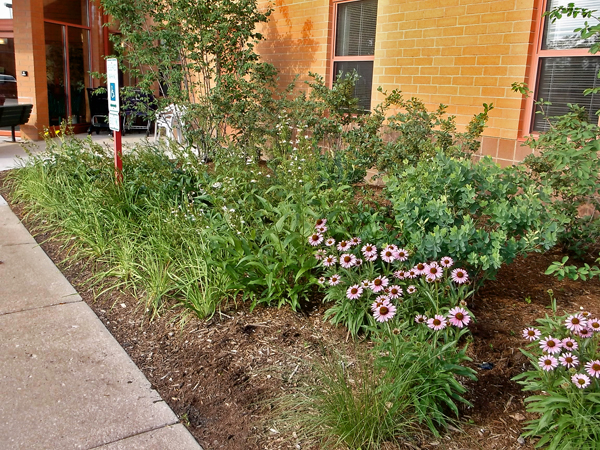
The Blue Baptisia (center right) with its gray-green leaves will form a 4 foot by 4 foot “shrub” when it reaches its mature size in a couple of years. Blue lupine-like flowers show in June, with ornamental seed pods all winter.

The yellow flowered Sand Coreopsis, C. lanceolata, was installed just a few weeks prior and will show off its mounded habit as it matures. Finches love the seeds that this low-growing flower provides.
In 2013, the wobbly shrubs were removed and more sunny natives were planted, including Nodding Onion, Sand Coreopsis, Purple Coneflower, and Winged Sumac, along with a hydrangea that was moved here from the existing planting at the entry doors. The rounded shrub, is actually a witch-hazel that will be allowed to grow into its natural picturesque form.

This part of the bed was planted just a month prior to this photo being taken. Nodding Onion in the foreground is just coming into bloom.
The parking lot island bed was originally planted with a low growing juniper, daylilies, and a Norway Maple – not much to catch the eye, but slightly better than lawn, which is often the default planting, or river rock.
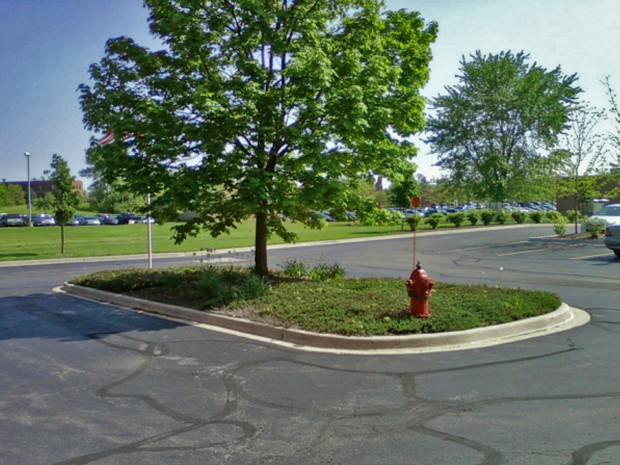
The plants that I chose for the island bed are tough prairie residents that could both take the heat of summer, as well as piles of snow in winter. Their mature heights are all under 3 feet when in flower. These pictures show how they are faring after going through their first winter, and in the middle of their second summer.

The plants were also chosen for their ease of maintenance (no deadheading needed, just mow the planting in the early spring, before new growth appears) and were installed in large repeated groupings so that their individual ornamental qualities will be appreciated by even the most staunch traditionalist.


The 18 to 24 inch spacing allows the Prairie Dropseed grass to show off its elegant form as it matures. Soon the soil will not be visible below them

A large grouping of Nodding Onion about to come into flower in late July, with the pods of earlier blooming Blue Baptisia showing behind
This new landscape will get better and better with good maintenance and with time. The goal of creating an interesting year-round landscape was achieved. And far from being dull, it is a “welcome relief and contrast” to the monotony of the landscapes that surround too many of our homes and businesses. It shows that including regionally native plants can make for an ever changing and vivacious landscape, full of life, and full of beauty.
North Facing Bed Planting Plan:
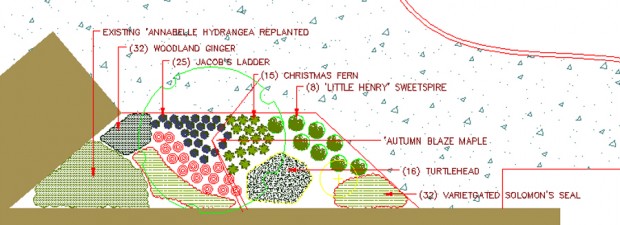
East Facing Bed Planting Plan
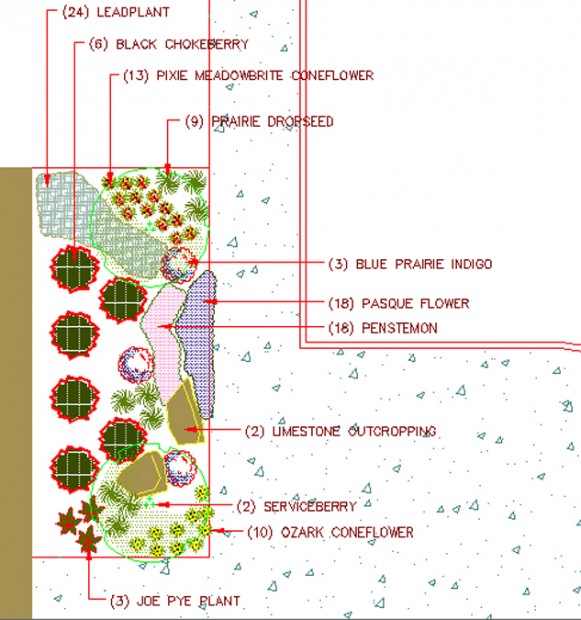
Island Bed Planting Plan
